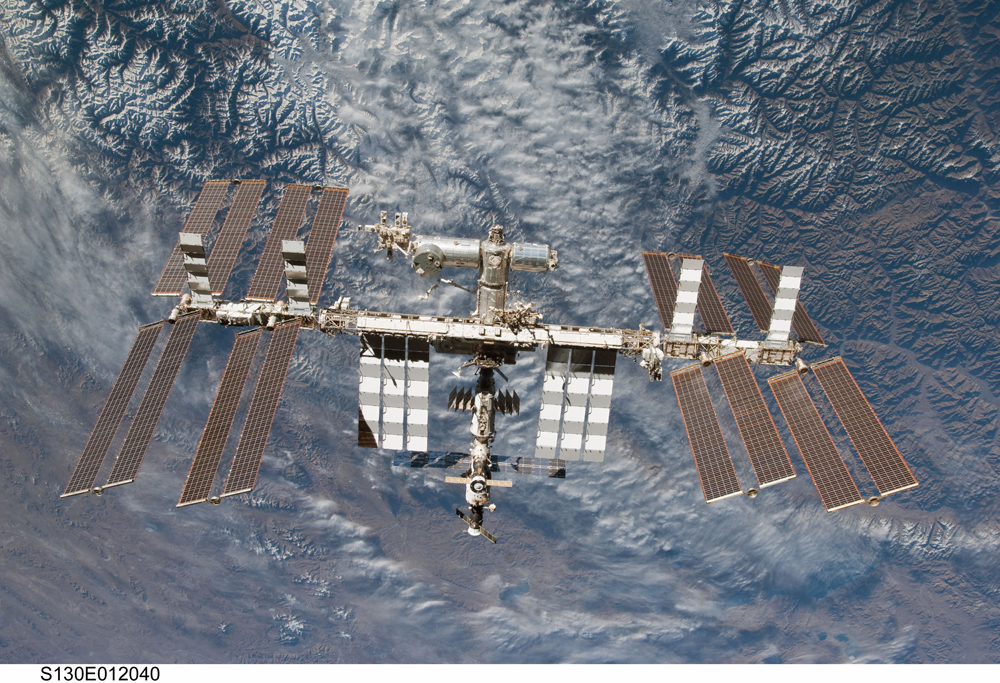International Space Station: Facts, History & Tracking

The International Space Station, as photographed by crewmembers aboard the space shuttle Endeavour in 2010.Credit: NASA
The International Space Station (ISS) is the most complex international scientific and engineering project in history and the largest structure humans have ever put into space. This high-flying satellite is a laboratory for new technologies and an observation platform for astronomical, environmental and geological research. As a permanently occupied outpost in outer space, it serves as a stepping-stone for further space exploration. This includes Mars, which NASA is now stating is its goal for human space exploration.
The space station flies at an average altitude of 248 miles (400 kilometers) above Earth. It circles the globe every 90 minutes at a speed of about 17,500 mph (28,000 kph). In one day, the station travels about the distance it would take to go from Earth to the moon and back. The space station can rival the brilliant planet Venus in brightness and appears as a bright moving light across the night sky. It can be seen from Earth without the use of a telescope by night sky observers who know when and where to look. You can use our Satellite Tracker page powered by N2YO.com to find out when to see the space station.
Five different space agencies representing 15 countries built the $100-billion International Space Station and continue to operate it today. NASA, Russia's Roscosmos State Corporation for Space Activities (Roscosmos), the European Space Agency, the Canadian Space Agency and the Japan Aerospace Exploration Agency are the primary space agency partners on the project.
Structure
The International Space Station was taken into space piece-by-piece and gradually built in orbit. It consists of modules and connecting nodes that contain living quarters and laboratories, as well as exterior trusses that provide structural support, and solar panels that provide power. The first module, Russia's Zarya module, launched in 1998. The station has been continuously occupied since Nov. 2, 2000.
[Infographic: The International Space Station: Inside and Out]
Starting in 2015, changes to the ISS were performed to prepare the complex for crewed commercial spacecraft, which will begin arriving as early as 2017. Two international docking adapters will be added to the station. Additionally, an inflatable module from Bigelow Aerospace is scheduled to arrive in 2016.
Current plans call for the space station to be operated through at least 2020. NASA has requested an extension until 2024. Discussions to extend the space station's lifetime are ongoing among all international partners; several countries, such as Canada, Russia and Japan, have expressed their support for extending the station's operations.
During the space station's major construction phase, some Russian modules and docking ports were launched directly to the orbiting lab, while other NASA and international components (including Russian hardware) were delivered on U.S. space shuttles. [Rare Photos: Space Shuttle at Space Station]
How big is the International Space Station?
The space station, including its large solar arrays, spans the area of a U.S. football field, including the end zones, and weighs 861,804 lbs. (391,000 kilograms), not including visiting vehicles. The complex now has more livable room than a conventional five-bedroom house, and has two bathrooms, gym facilities and a 360-degree bay window. Astronauts have also compared the space station's living space to the cabin of a Boeing 747 jumbo jet.
No comments:
Post a Comment